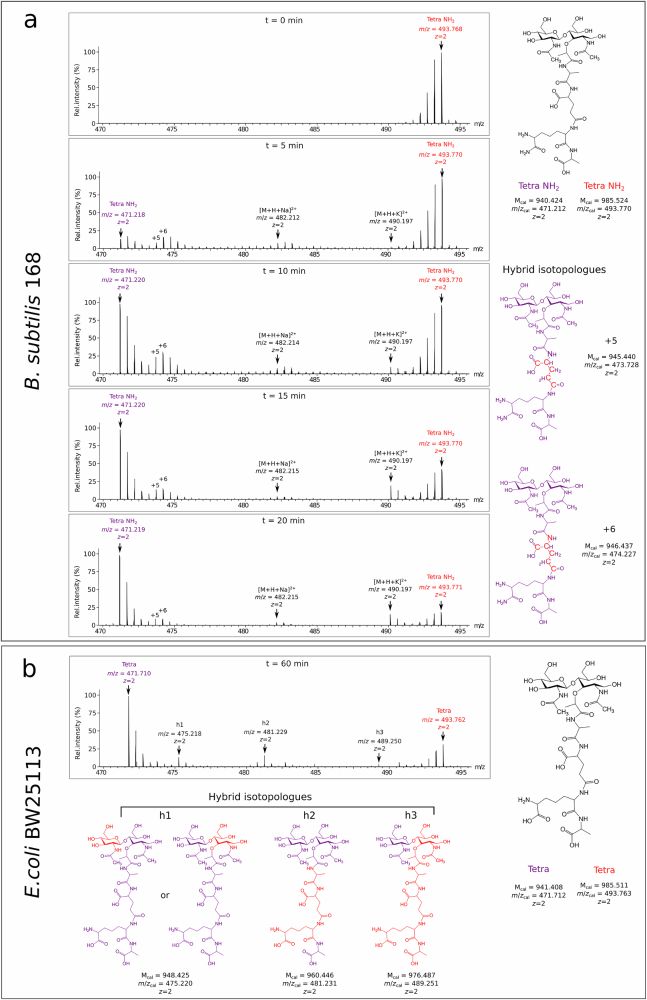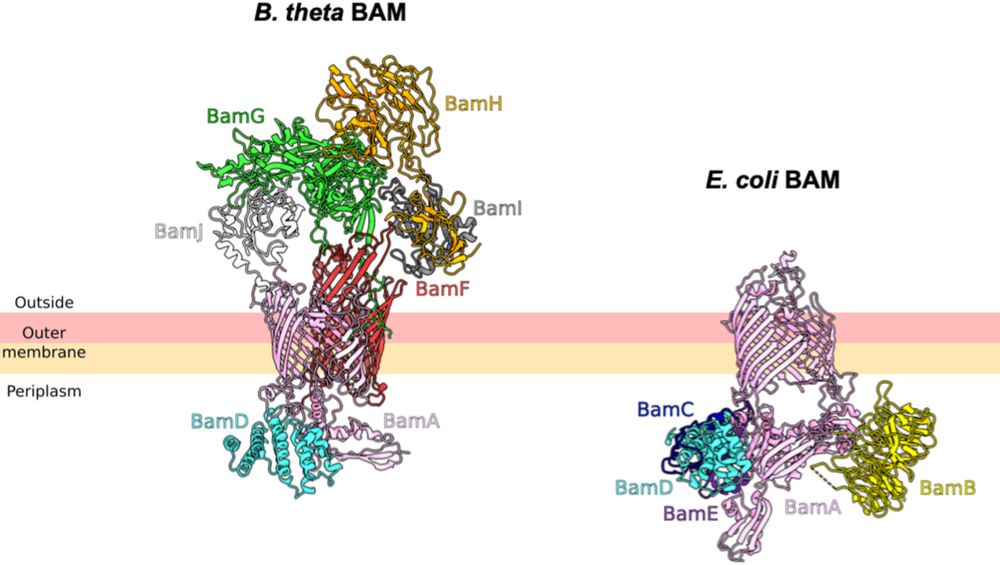EMBO fellow. Bacterial cell envelope. Antibiotics. PhD from the
Arthur lab in Paris. 🧫🧬💊
We discuss how tethering the OM to the PG in E. coli preserves integrity — and extend the concept across diderm bacteria.
Curr Opin Microbiol: doi.org/10.1016/j.mi...
#microsky 🔬
We discuss how tethering the OM to the PG in E. coli preserves integrity — and extend the concept across diderm bacteria.
Curr Opin Microbiol: doi.org/10.1016/j.mi...
#microsky 🔬
Using E. coli lacking all 8 endopeptidases, we provide direct evidence that peptidoglycan expansion during elongation requires ED-mediated insertion of one glycan strand at a time. This can be performed by MepS, MepM, MepH and PBP7 #microsky

Using E. coli lacking all 8 endopeptidases, we provide direct evidence that peptidoglycan expansion during elongation requires ED-mediated insertion of one glycan strand at a time. This can be performed by MepS, MepM, MepH and PBP7 #microsky
We found that BAM in Bacteroides and Porphyromonas gingivalis has a distinct architecture from BAM in Proteobacteria.
doi.org/10.1038/s415...

We found that BAM in Bacteroides and Porphyromonas gingivalis has a distinct architecture from BAM in Proteobacteria.
doi.org/10.1038/s415...

Roll on 2027, venue to be confirmed shortly …

Roll on 2027, venue to be confirmed shortly …
www.biorxiv.org/content/10.1...

www.biorxiv.org/content/10.1...
Studying obligate predators like Bdellovibrio bacteriovorus is tricky—essential genes for predation are also essential for survival.
We expanded its genetic toolbox:
🧬promoters to fine-tune expression
🧬IPTG-inducible system
🧬CRISPRi for rapid knockdown
bit.ly/46GUn2c
1/4

Studying obligate predators like Bdellovibrio bacteriovorus is tricky—essential genes for predation are also essential for survival.
We expanded its genetic toolbox:
🧬promoters to fine-tune expression
🧬IPTG-inducible system
🧬CRISPRi for rapid knockdown
bit.ly/46GUn2c
1/4
Kerwyn Huang, @typaslab.bsky.social et al find that E. coli outer-membrane protein RcsF senses reduced periplasm thickness due to increased cell width, & activates Rcs signaling
www.embopress.org/doi/full/10....

Kerwyn Huang, @typaslab.bsky.social et al find that E. coli outer-membrane protein RcsF senses reduced periplasm thickness due to increased cell width, & activates Rcs signaling
www.embopress.org/doi/full/10....


We challenge the long-standing view that peptidoglycan alone protects cells from bursting.
Our study shows that the periplasm — enclosed by OM–PG connections — acts as a pressure buffer essential for osmoprotection in Gram-negative bacteria.
📄 www.nature.com/articles/s41...

We challenge the long-standing view that peptidoglycan alone protects cells from bursting.
Our study shows that the periplasm — enclosed by OM–PG connections — acts as a pressure buffer essential for osmoprotection in Gram-negative bacteria.
📄 www.nature.com/articles/s41...


Predatory bacteria kill and eat other bacteria. Their deadly actions come in many flavors, often via direct physical contact between predator &
prey 🧛
How do they do it?
Our review 📖 @coralietesseur.bsky.social @ysantin.bsky.social
www.sciencedirect.com/science/arti...

Predatory bacteria kill and eat other bacteria. Their deadly actions come in many flavors, often via direct physical contact between predator &
prey 🧛
How do they do it?
Our review 📖 @coralietesseur.bsky.social @ysantin.bsky.social
www.sciencedirect.com/science/arti...
Excited to have contributed to this great collab with the Lovering lab on this intriguing protein. @lalouxlab.bsky.social
👉 Paper here!
www.nature.com/articles/s41...
#BacterialPredation #Bdellovibrio #StructuralBiology

Excited to have contributed to this great collab with the Lovering lab on this intriguing protein. @lalouxlab.bsky.social
👉 Paper here!
www.nature.com/articles/s41...
#BacterialPredation #Bdellovibrio #StructuralBiology


Abstraction submission for the next Great Wall Symposium is now open!
Come to Sicily in September and learn the latest on bacterial cell wall biology.
thegreatwall-symposium.org/abstract-sub...
Abstraction submission for the next Great Wall Symposium is now open!
Come to Sicily in September and learn the latest on bacterial cell wall biology.
thegreatwall-symposium.org/abstract-sub...

www.nature.com/articles/s41...

www.nature.com/articles/s41...

